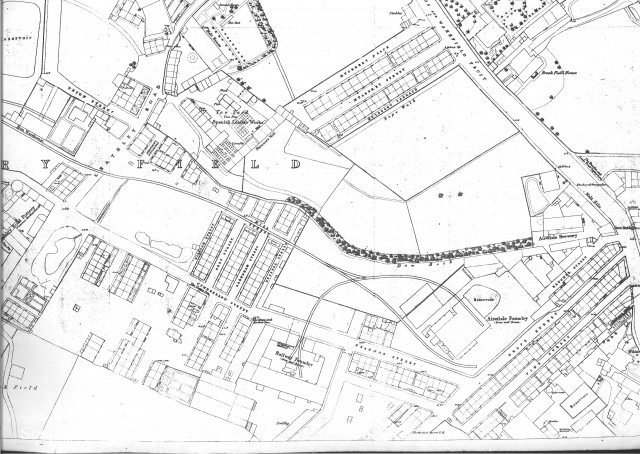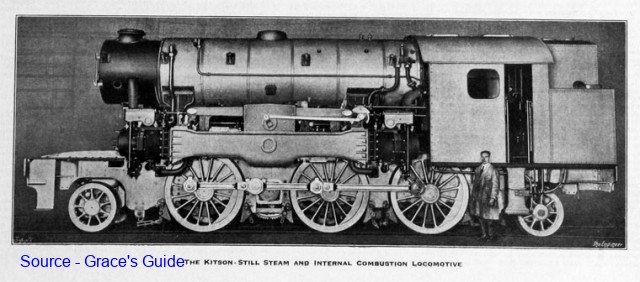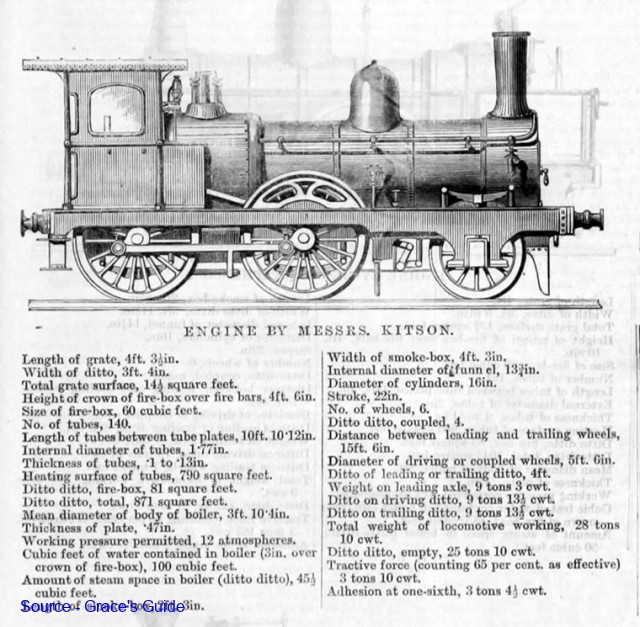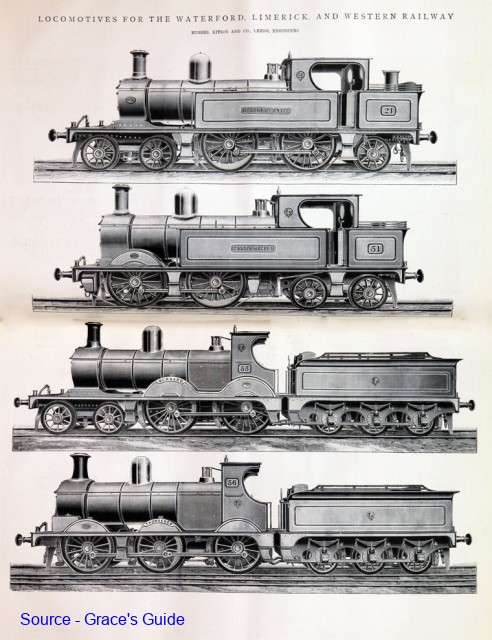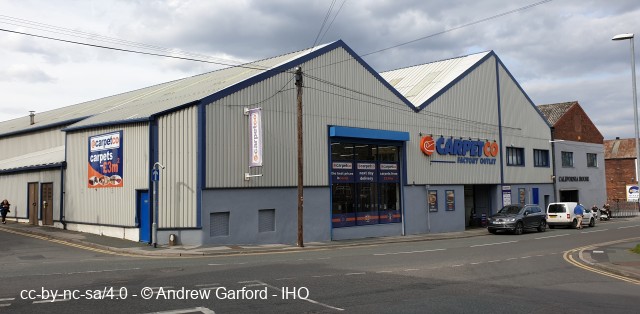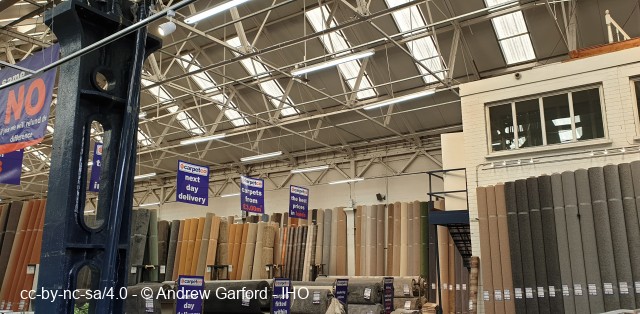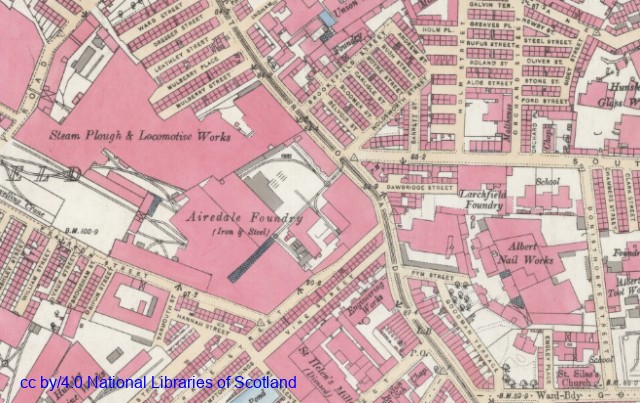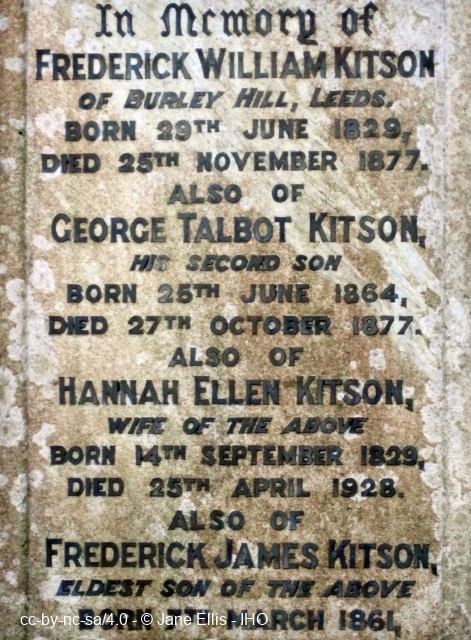Description and History of Site:-
Kitson's Airedale Foundry produced over 5000 locomotives between 1839 and 1938.
Located in Hunslet, Leeds, an area which contained several steam engine works such as John Fowler (alongside the Airedale Foundry), J&H McLaren, Manning Wardle, E.B Wilson, Hunslet Engine Co and Hudswell Clarke, all existing alongside and across the road from each other. The whole Hunslet area was a mass of engineering and engine builders which caused problems due to the proximity of some firms, highlighted by the anecdote of Fowler's using their drop hammer, causing the ground to shudder leading to some precision machining being ruined next door in the Kitson works. This lead to Fowler's having to phone their neighbours with a warning when the drop hammer was due to be in action again.
Kitson supplied many of the mainline railway companies such as Midland Railway, Lancashire & Yorkshire Railway and South East Railway and managed to retain much of that work, producing a large number of tender locos and express passenger locomotives whereas other local engine builders were specialising in industrial tank engines. From 1855 many Indian railways became important customers.
Alongside locomotives the company built around 300 steam trams, supplying the first steam tram for Leeds Tramway Company with the works being connected to the Leeds tramway system because of this work. Kitson held several patents for trams which included valve gear and automatic braking systems. 1837 James Kitson, who had quickly realised the potential of steam locomotives, went into business with Charles Todd, a former apprentice at the Round Foundry, (see WYK01412) and a financial backer David Laird. Their new engine building business, The Railway Foundry was formed on the south side of Pearson Street, Hunslet, Leeds (see WYK02328).
The partnership didn't last long and in 1839 Kitson and Laird left the business, moving across Pearson Street where they established the Airedale Foundry.
The Kitson & Laird partnership only lasted until 1842 with David Laird leaving having not achieved enough financial return from his investment. James Kitson formed a new partnership with Isaac Thompson and William Hewitson to form Kitson, Thompson & Hewitson. In 1854 Kitson bought nearby Monk Bridge Iron Works (see WYK01437) to ensure an adequate supply of Best Yorkshire iron for the business.
After Thompson's retirement in 1858 the business became Kitson & Hewitson.
Alongside locomotives Kitson & Hewitson's became involved with the production of Fowler ploughing engines. John Fowler (see WYK01405) was becoming more successful with his agricultural machines, and with orders coming in he turned to Kitson & Hewitson to fulfil them. As business boomed John Fowler established his own works next door to the Airedale Foundry with financial backing from William Hewitson.
In 1863 the Airedale Foundry became Kitson & Co with the death of Hewitson. Kitson's sons Frederick William, James Jnr and John Hawthorne joined the company becoming partners.
In 1880 Richard Clere Parsons joined the company as a partner and around 1882 encouraged his brother Charles Algernon Parsons to join Kitson's assisting with research and development. Charles built his first four cylinder high-speed steam engine, the Epicycloidal whilst at Kitson's who built 40 of them for him. He also experimented with and manufactured rocket propellant/turbine powered torpedoes whilst at Kitson's, testing them early in the mornings on the lake at Roundhay Park, Leeds. During his time at the Airedale Foundry Charles started thinking about a different use for steam power, realising that the reciprocating piston steam engine had reached the limits of its speed. He left Kitson's, eventually forming his own company near Newcastle, and went on to patent the steam turbine in 1884 and produced the worlds first steam turbine powered ship 'Turbinia'.
During their near 100 year existance Kitson's produced over 5,400 locomotives, however the engine builders who survived the 1920's - 30's were the ones who embraced the internal combustion engine, which Kitson's failed to do. However an interesting prototype that Kitson's developed was a hybrid steam/diesel loco based on an invention by Joseph Still and would go on to be trialled by the LNER Company. The Kitson-Still loco used eight double acting cylinders, steam on one side of the piston and diesel on the other. Steam provided the extra power boost when needed with the diesel doing most of the work during constant running. The exhaust from the diesel was used to boost the steam heat, saving fuel in the oil fired steam engine. The engine ran well but the cost of development was high which would lead to Kitson's eventual downfall. Other engine builders concentrated on building diesel locos which became the choice of railway companies. The Kitson-Still loco was returned to Kitson's for eventual disposal. The expensive development of the hybrid lead to the Receiver being called in and running the company from 1934-7.
The works were acquired by J & H McLaren of the nearby Midland Engine Works (see WYK01423) who previously built steam traction engines but were now building increasingly popular diesel engines. The works now named Airedale Works and producing diesel engines until 1959 when McLaren's then parent company Hawker Sidley closed the works as a streamlining exercise.
McLaren's specialist welding facility remained until 1965 where they fabricated parts for the Class 31 diesel loco for Brush, in one of Kitson's surviving buildings, the former 'V Shop' which survives today (2020) as a carpet store on the corner of Ivory Street and Leathley Road, Hunslet, Leeds.
Further Reading and References:-http://www.leedsengine.info/leeds/histk.asp
https://www.mylearning.org/stories/originating-in-leeds/134
http://www.steamindex.com/manlocos/kitsons.htm
http://www.leedsengine.info/leeds/hunslet.asp
https://en.wikipedia.org/wiki/Charles_Algernon_Parsons
https://www.lner.info/locos/IC/kitson.php
Help us improve this entry
The compilers welcome corrections or additional information on all sites.
Any information provided will be verified before appearing on the web site.
Email comments
Key Words :- steam engine manufacturers foundry engineers trams
Viewing the Site :- Public footpath alongside road.
Address :- Pearson Street, Hunslet, Leeds, West Yorkshire
Grid Ref :- SE 30754 32253
Co-ordinates :- Lat 53.785697 , Long -1.534715
Local Authority :- Leeds Council
Pre 1974 County :- Yorkshire - West Riding
Site Status :- Site extant - Protected status unknown
Site Condition :- Site in alternative industrial use
Site Dates :- 1839 -
Record Date :- 15 March 2020
Copyright :- cc-by-nc-sa 4.0 © Andrew Garford
Grid Ref :- SE 30754 32253
Co-ordinates :- Lat 53.785697 , Long -1.534715
Local Authority :- Leeds Council
Pre 1974 County :- Yorkshire - West Riding
Site Status :- Site extant - Protected status unknown
Site Condition :- Site in alternative industrial use
Site Dates :- 1839 -
Record Date :- 15 March 2020
Copyright :- cc-by-nc-sa 4.0 © Andrew Garford
